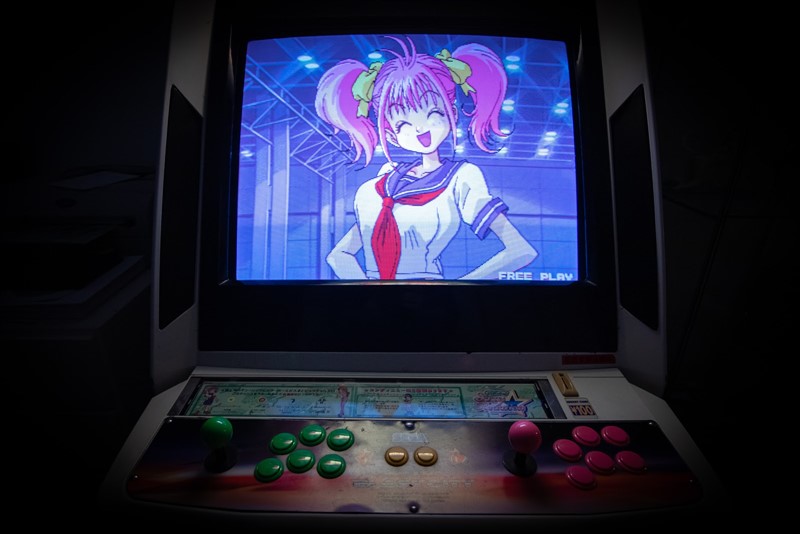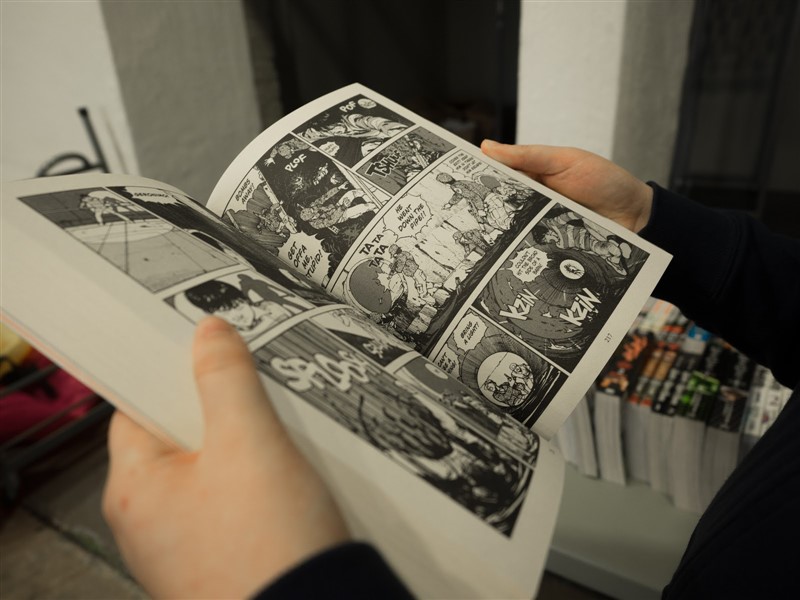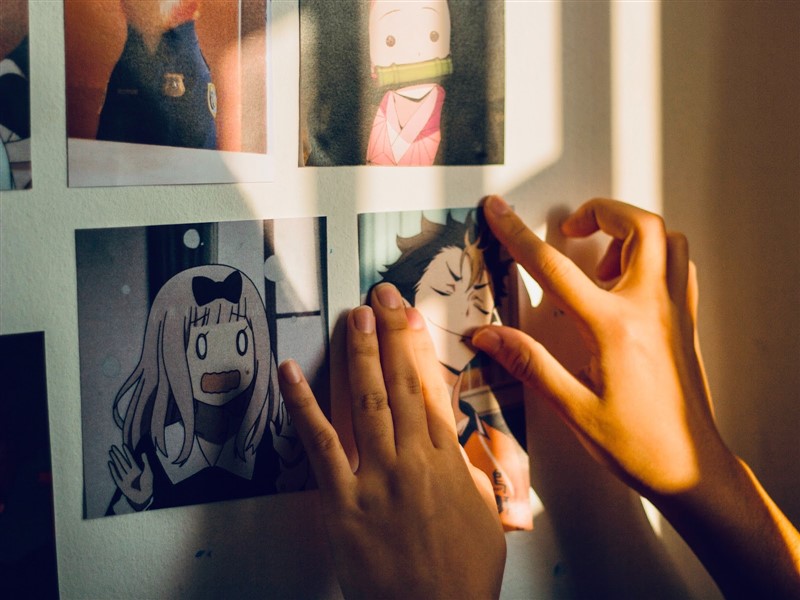Anime is a type of Japanese animation viewed in films, TV shows, or clips. The term manga references Japanese comic books and graphic novels.
-
 Alanna Madden
Alanna Madden
-
 February 2, 2021
February 2, 2021
-
 Grammar Tips
Grammar Tips
 February 2, 2021
February 2, 2021
 Grammar Tips
Grammar Tips
Anime is a type of Japanese animation viewed in films, TV shows, or clips. The term manga references Japanese comic books and graphic novels.
Manga and anime are creative forms of Japanese storytelling known for their imagination, style, elaborate plotlines, and relatable characters. Popular examples include cult television classics like Dragon Ball Z and Naruto, which have familiarized fans with Japanese illustration styles and techniques.
However, both animated cartoons started as Japanese graphic novel series, leaving many people to wonder if books-turned-TV-shows are manga or anime? Or are they both?

The biggest misconception about manga and anime is that they are interchangeable terms to describe all forms of Japanese illustration. Sure, there are visual similarities between the two art forms, but this shouldn’t detract from their differences at the level of artistic process, medium, and product.
Manga is the name for graphic novels and comic books following a style that originated in Japan. As such, manga describes mostly hand-drawn illustrations, although technology advancements have allowed manga artists to produce their work using computer programs.
Anime, a word derived from the English noun “animation,” describes all animations following an original Japanese illustration style. It is common for Japanese speakers to use the noun “anime” while describing all animation styles and origins. But outside of Japan, the term “anime” may reference a film or television show produced in Japan or of the Japanese animation style.
The main difference between manga and anime falls back on the differences between illustration and animation. According to Lexico, an animation is either:
While animation consists of illustration, it takes the illustration and constructs them into moving images, making the animation. In contrast, the definition of illustration is “a picture illustrating a book, newspaper, etc.,” such as a drawing in a comic book or portrait. Since animation is a compilation of illustrations that create a moving visual, it is technically incorrect to reference manga as anime and vice versa.
While manga and anime are not the same concepts, that’s not to say their styles are not similar. Both anime and manga feature Japanese artistry and style consisting of dramatic facial features (such as the eyes) and recognizable facial expressions.
The two styles are so similar that before the term “anime” emerged in the 1970s’ (nearly 60 years after the first Japanese animated clip in 1907), anime was known as “TV manga.” However, manga is commonly produced in black and white, while anime is known for its bright colors, elaborate plotlines, and dream-like landscapes.
But despite the limitations of manga’s medium, it’s not uncommon to find anime adaptations of manga series. For example, Hunter x Hunter is an anime TV series based on the manga written and illustrated by Yoshihiro Togashi. Sailor Moon is another popular anime TV series created by manga writer and illustrator Naoko Takeuchi.
Anime TV series are adapted into mangas as well, so it’s common to find artists who are skilled in both art forms. For instance, Hayao Miyazaki is a renowned Japanese filmmaker, animator, and manga artist known for writing and directing films like My Neighbor Totoro (1988) or Howl’s Moving Castle (2004).
“Mangaka” is a Japanese word for someone who creates mangas, whether they are the author, illustrator, or both. Famous mangaka includes Osamu Tezuka (Astro Boy), Eiichiro Odo (One Piece), Akira Toriyama (Dragon Ball Z), and Hiro Arakawa (Fullmetal Alchemist).
According to the New Oxford English Dictionary, the word anime is a noun that describes a Japanese movie and television animation. Many anime series are well known for their science fiction themes, although some subgenres are notorious for their violent or sexual material (“Anime” 62).
Examples sentences with the noun anime include:
The Japanese noun anime rose to the mainstream during the 1970s, and it is thought to be a transliteration of the English “animation” (animēshon) or an adaptation of French animé (meaning ‘animated’ or ‘lively’). In either case, the origin of French animé and English animation stem back to Latin animatus, which means ‘to give breath to.’

The noun manga describes a genre of Japanese comic books and graphic novels targeted toward audiences of all ages. Like anime, manga may feature science fiction, violence, and sexually explicit content (“Manga” 1063). For example,
The noun magna may also reference a singular comic book or graphic novel of the manga genre, while the plural form is “mangas.” For example,
The Japanese noun manga consists of “man-” for ‘aimless’ and “-ga” for ‘picture,’ and together, it evokes a sense of entertaining and easeful artwork (1063). According to the Online Etymology Dictionary, “manga” was coined by Japanese artist Katsushika Hokusai in 1814 to describe “a sense of free-flowing composition and quirky style” through cartoons and caricatures.
To finalize our understanding of manga vs. anime, let’s take a look at a few published examples that elaborate on their differences:
Pokémon, which is the name of a popular Japanese anime TV show, is both a singular and mass noun. It is grammatically correct to write, “I caught one Pokémon” or “I caught many Pokémon.”

Due to their stylistic similarities, anime and manga have an overlapping fanbase, and it’s common to hear or read both terms in the same conversation. However, the key difference between manga and anime boils down to the fact that one artform “moves” (as in animation) and one is “still” (as in comic books).
An easy way to remember the difference between manga and anime is by relaying anime to its etymological root. Once you recall that anime stems from “animation” (they sound very similar aloud), you’ll remember that it is an art that moves or that it’s art with “breath.” The meaning of manga then falls into place as the still-art of graphic novels and comics.
Pokémon is anime because it’s an animated TV show. If we read a Pokémon storyline in a graphic novel or comic book format, then it would be a manga.
Based on our understanding of manga vs. anime, we already know that manga is inherently different from other types of storytelling because it is unique to Japanese artistry.
Whether it’s the language, style of illustration, or black and white printing, manga is distinctly unique from any comic book you’ll find elsewhere. However, there are more differences to consider, such as:
Test how well you understand the difference between manga and anime with the following multiple-choice questions.
Answers